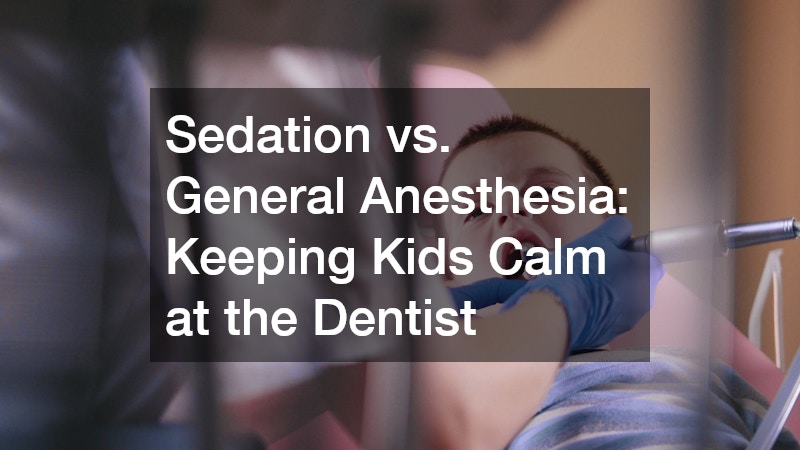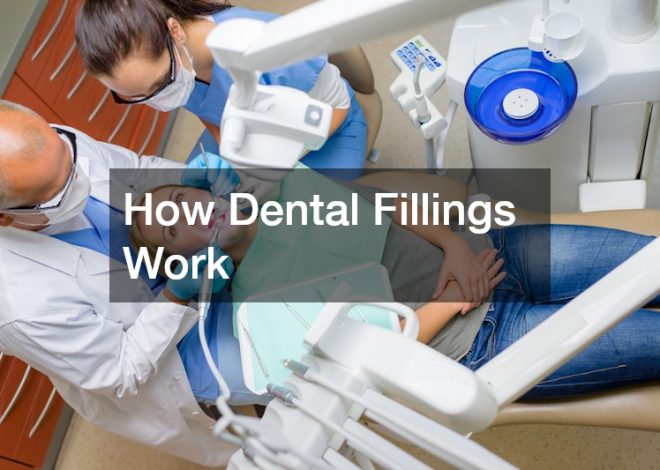
Sedation vs. General Anesthesia: Keeping Kids Calm at the Dentist

Dental visits can be a source of anxiety and fear for many children and their parents. The unfamiliar environment, strange noises, and sometimes uncomfortable procedures can create a stressful experience that might make parents hesitant to bring their child in for regular dental care. Fortunately, modern dentistry offers safe and effective ways to help children stay calm, relaxed, and comfortable during treatments. Two common approaches to achieving this are sedation dentistry and general anesthesia.
Understanding the differences between these methods is essential for parents to feel confident about their child’s dental care. In this post, we will explore what sedation and general anesthesia are, how they work, when each is recommended, and what parents can expect during procedures using these techniques.
What is Sedation Dentistry?
Sedation dentistry refers to the use of medication to help patients relax during dental procedures. When it comes to children, sedation is typically designed to make them feel calm and slightly sleepy without fully losing consciousness. It is a gentle and controlled way to reduce anxiety, minimize discomfort, and limit movement, allowing the dentist to perform necessary work efficiently and safely.
There are several types of sedation used in pediatric dentistry, but the mild sedation typically used for children is often administered as a small dose to drink or as a nasal spray before the procedure begins. This medication helps ease anxiety and discomfort but keeps the child awake enough to respond to their dentist and dental care team when necessary.
How Does Sedation Dentistry Work?
Sedation works by calming the nervous system. The child feels relaxed and less aware of their surroundings, which reduces their stress and fear. Unlike general anesthesia, sedation does not induce a deep sleep. Instead, it puts the child in a light, drowsy state, sometimes described as being “half-awake.”
During sedation, the child’s heart rate and breathing remain stable, and they can still follow simple instructions if needed. This means sedation dentistry is usually performed right in the dental office, with the child seated comfortably in the dental chair. The dentist and dental assistants monitor the child carefully throughout the procedure to ensure safety.
When is Sedation Dentistry Recommended?
Sedation is often recommended for children who:
- Do not have major health concerns such as airway abnormalities or serious respiratory conditions.
- Are older and can communicate with the dental team.
- Require dental procedures that are not overly extensive or complex.
- Experience mild to moderate anxiety or fear of dental visits.
For many children who fit these criteria, sedation dentistry offers an excellent balance of relaxation and safety without the need for more intensive interventions.
What is General Anesthesia?
General anesthesia is a medically induced state of unconsciousness. When a child receives general anesthesia for dental procedures, they enter a deep sleep-like state and are completely unaware of the treatment. Unlike sedation, general anesthesia ensures the child feels no pain and has no memory of the procedure afterward.
Because general anesthesia affects the entire body, it requires more intensive monitoring and support. The process is overseen by an anesthesiologist—a specialized doctor trained to administer anesthesia and manage patient safety during the procedure.
How Does General Anesthesia Work?
Before and during the dental treatment, the child receives a combination of medications that induce and maintain deep unconsciousness. This is typically administered intravenously (through an IV line), along with other medications to support breathing.
During general anesthesia, the child’s breathing is usually assisted through a breathing tube inserted into the nose or mouth to ensure adequate oxygen delivery. Continuous monitoring of heart rate, blood pressure, and oxygen levels is critical throughout the procedure and recovery.
Because of the complexity and risks involved, general anesthesia procedures for dental care are conducted in an operating room setting, with a full medical team present to provide comprehensive care.
When is General Anesthesia Recommended?
General anesthesia is typically recommended for children who:
- Have complex medical needs or existing airway or respiratory conditions that make sedation unsafe.
- Are very young or highly fearful, making cooperation during dental treatment difficult or impossible.
- Require extensive or multiple dental procedures that would otherwise take several visits.
- Need treatments that cannot be effectively managed with sedation dentistry alone.
This approach ensures the child’s safety and comfort during lengthy or complicated dental work, eliminating stress and pain completely.
Key Differences Between Sedation and General Anesthesia
Understanding the distinctions between sedation and general anesthesia can help parents make informed decisions and prepare their children for dental visits.
| Aspect | Sedation | General Anesthesia |
|---|---|---|
| Level of consciousness | Child is drowsy but responsive | Child is fully unconscious |
| Administration method | Oral medication, nasal spray | IV medication with breathing tube |
| Location of procedure | Dental clinic chair | Operating room |
| Monitoring | Dentist and dental assistants | Anesthesiologist and medical team |
| Safety considerations | Suitable for healthy children | Used for children with complex needs |
| Recovery time | Short, child wakes up quickly | Longer, requires close post-op care |
| Procedure duration | Short to moderate | Suitable for long or multiple procedures |
What to Expect During Sedation Dentistry for Kids
When sedation dentistry is chosen, the experience is designed to be as smooth and stress-free as possible.
- Preparation: Before the appointment, the dentist will review the child’s medical history to ensure sedation is appropriate and safe. Parents will receive instructions on fasting or eating before the procedure to minimize risks.
- Administration: At the appointment, sedation is typically given as a flavored liquid to drink or as a gentle nasal spray. The child may begin to feel calm and sleepy within minutes.
- During the Procedure: The child will be comfortably reclined in the dental chair and stabilized with safety straps or supports to prevent sudden movements. The dental team will continuously monitor the child’s vital signs and responsiveness.
- Post-Procedure Care: After the treatment, the child will be observed until the sedation wears off enough for them to be safely discharged. Parents should plan for the child to rest and avoid strenuous activities for a few hours afterward.
What to Expect During General Anesthesia for Kids
If general anesthesia is recommended, parents can expect a more medically intensive experience.
- Pre-Anesthesia Appointment: The child may have a preoperative consultation with an anesthesiologist to review health status and prepare for the procedure.
- Fasting Instructions: It’s crucial to follow strict fasting guidelines before the appointment to reduce the risk of complications during anesthesia.
- Day of Procedure: The child will be admitted to an operating room setting, where anesthesia will be administered through an IV. The anesthesiologist will manage all aspects of sedation and safety.
- During Treatment: The child will remain unconscious throughout the dental procedure, with vital signs constantly monitored.
- Recovery: After the procedure, the child will be moved to a recovery room for close monitoring until they regain consciousness and vital signs stabilize. This recovery period may take longer than sedation.
- Discharge and Aftercare: Parents will receive detailed instructions on post-anesthesia care, including how to manage pain, diet, and activity restrictions.
Is Sedation Dentistry Safe for Children?
Sedation dentistry is considered safe when administered by trained professionals following established guidelines. The key is proper patient selection and monitoring. Children without significant medical issues who need minor to moderate dental work are usually excellent candidates for sedation.
The dental team takes multiple precautions to ensure the child’s safety, such as checking medical history, adjusting medication doses based on weight and age, and continuous monitoring of heart rate and breathing during the procedure.
If you are concerned about sedation dentistry or have questions about your child’s suitability, don’t hesitate to discuss them with your dentist before the appointment.
The Role of the Dental Team in Child Safety
Whether your child undergoes sedation or general anesthesia, the dental care team plays a vital role in ensuring a positive and safe experience.
- Dentist: Evaluates the child’s dental and medical needs, recommends the appropriate type of anesthesia, and performs the dental treatment.
- Anesthesiologist: (For general anesthesia) Administers and monitors anesthesia, manages airway and breathing, and responds to any medical emergencies.
- Dental Assistants and Nurses: Assist the dentist and anesthesiologist, help monitor the child’s vital signs, and provide comfort and reassurance.
- Parents: Support the child emotionally before and after the procedure and follow pre- and post-procedure instructions carefully.
Making the Decision: Sedation or General Anesthesia?
Deciding between sedation and general anesthesia depends on multiple factors, including:
- The child’s age and developmental level
- Medical history and existing health conditions
- Level of dental anxiety or fear
- Type and extent of dental work required
- Recommendations from the dental team
Open communication with your child’s dentist is essential. They will consider these factors and help design a care plan that balances safety, comfort, and effectiveness.
Tips for Preparing Your Child for Dental Procedures
In addition to sedation or anesthesia, preparing your child mentally can significantly improve their dental experience. Here are some helpful tips:
- Explain the Process: Use age-appropriate language to describe what will happen during the dental visit.
- Stay Positive: Frame the visit as a positive experience and avoid using words that might scare your child.
- Practice Relaxation: Teach your child deep breathing or other calming techniques before the appointment.
- Bring Comfort Items: A favorite toy or blanket can provide reassurance during the visit.
- Be Patient: Allow your child to ask questions and express feelings about the dental visit.
Closing Thoughts
Dental care is an essential part of your child’s overall health, and making visits to the dentist as comfortable as possible can help foster a lifetime of good oral hygiene habits. Both sedation dentistry and general anesthesia offer valuable tools for managing anxiety, pain, and movement during dental procedures.
Sedation is a gentle way to relax children while keeping them responsive and safe, ideal for less complex procedures and older children. General anesthesia provides a deeper level of comfort and safety, reserved for more complicated or extensive treatments, young children, or those with special medical needs.
Your child’s dentist will guide you through the best options for your child’s unique needs, ensuring their safety and comfort every step of the way.
If you have concerns or questions about sedation or general anesthesia for your child’s dental care, be sure to consult your dentist or pediatric dental specialist for personalized advice and support.



